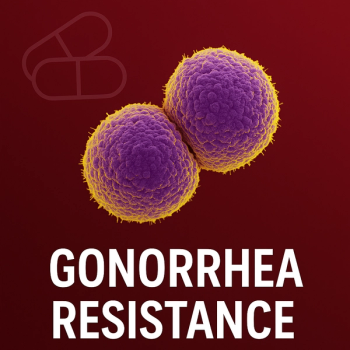
Researchers Discover Just How Some MRSA Strains Resist Antibiotics
Methicillin-resistant Staphylococcus aureus (MRSA) causes more than 11,000 deaths in the United States each year and a new study shows how this pathogen is able to evade last-line antibiotics.
For today’s doctors, antibiotic-resistance superbugs can seem like elusive criminals evading capture. In further proof of just how wily these pathogens can be, a team of researchers has discovered that
MRSA makes the Centers for Disease Control and Prevention’s (CDC) top “
A recent
“Antibiotics work by targeting vital machinery in bacteria,” study author Andrew Edwards, MB, BS, said in an interview with Contagion. “This kills the bacteria, or at least stops them from growing. However, in this work, we found that MRSA can release decoys that trick the antibiotic and divert the drug away from the bacteria.”
Dr. Edwards and his team found that while a wild-type S. aureus that released the decoys was quickly killed by daptomycin, a mutant version often found in clinical isolates also releases cytolytic toxins that results in treatment failure. When the researchers studied how the daptomycin worked on MRSA in mice, they found that the antibiotic decreased the wild-type bacteria 15-fold but did not create a significant decrease in the number of mutant bacteria. The authors also noted that staphylococcal infections are often caused by a mix of these MRSA strains, and that the presence of the mutant bacteria can help protect wild-type bacteria from the effects of daptomycin.
To try and improve treatment against these pathogens, the researchers tried a combination therapy with the beta-lactam antibiotic oxacillin, known to promote the activity of daptomycin. They found that at certain concentrations, oxacillin boosted daptomycin’s ability to kill the mutant S. aureus. The researchers also found that two antibiotics did not work as well together against wild-type S. aureus alone, but the combination was effective in mixed populations of the strains. “Most of our current drugs are safe, cheap and, for the most part, effective,” explains Dr. Edwards. “Therefore, we need to use our drugs in better ways to reduce the emergence of resistance.
Combination therapy is one potential way of doing this. However, whilst some combinations are synergistic, others can be antagonistic. Therefore, it’s essential to figure out which combinations are useful in treating each of the different types of infection that occur. We also need better diagnostics so that the best drug can be used as quickly as possible.”
The Imperial College London press release notes that a next generation antibiotic currently in clinical trials has been found to stop the production of decoys that have helped make MRSA so hard to treat. “Bacteria will evolve resistance to all of our effective antibiotics eventually,” says Dr. Edwards. “We need to use our current drugs better, to preserve their effective lifespan, and we need to develop new therapeutics. These might be new antibiotics or alternatives such as drugs that reverse resistance and allow current antibiotics to work against resistant bacteria.”
Newsletter
Stay ahead of emerging infectious disease threats with expert insights and breaking research. Subscribe now to get updates delivered straight to your inbox.


















































































































































































































































































